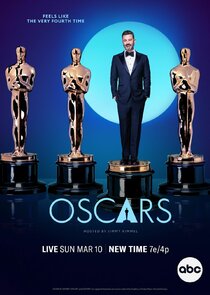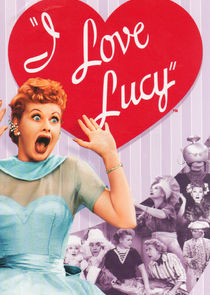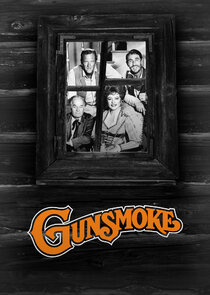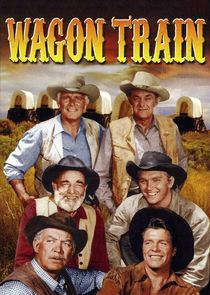Marion Mitchell Morrison (born Marion Robert Morrison), better known by his stage name John Wayne, was an American film actor, director, and producer. An Academy Award-winner, Wayne was among the top box office draws for three decades. An enduring American icon, and worldwide cultural figure he epitomized rugged masculinity and is famous for his demeanor, including his distinctive calm voice, walk, and height. Wayne was born in Winterset, Iowa, but his family relocated to the greater Los Angeles area when he was nine years old. He graduated from Glendale High School in Glendale, California. He found work at local film studios when he lost his football scholarship to USC as a result of a bodysurfing accident.
Initially working for the Fox Film Corporation, he mostly appeared in small bit parts. His first leading role came in Raoul Walsh's lavish widescreen epic The Big Trail (1930), which led to leading roles in numerous B movies throughout the 1930's, many of them in the western genre. His career rebounded in 1939, with John Ford's Stagecoach making him an instant mainstream star. Wayne would go on to star in 142 pictures. Biographer Ronald Davis says: "John Wayne personified for millions the nation's frontier heritage. Eighty-three of his movies were Westerns, and in them he played cowboys, cavalrymen, and unconquerable loners extracted from the Republic's central creation myth."
Among his better-known later films are The Quiet Man (1952), in which he is an Irish-American in love with a fiery spinster played by Maureen O'Hara; The Searchers (1956), in which he plays a Civil War veteran whose young niece (Natalie Wood) is abducted by a tribe of Comanches in an Indian raid;Rio Bravo (1959), playing a sheriff with Dean Martin; The Man Who Shot Liberty Valance (1962), portraying a troubled rancher competing with Eastern lawyer (James Stewart) for a woman's hand in marriage; True Grit (1969), as a humorous U.S. Marshal who sets out to avenge a man's death in the role that won Wayne his Academy Award; and The Shootist (1976), his final screen performance, in which he plays an aging gunfighter battling cancer. Wayne was a prominent Republican in Hollywood, supporting anti-communist positions. In June 1999, the American Film Institute named Wayne 13th among the Greatest Male Screen Legends of All Time.
John Wayne was born Marion Robert Morrison on May 26, 1907 at 224 South Second Street in Winterset, Iowa. The local paper, Winterset Madisonian reported on page 4 of the May 30, 1907 edition, that Wayne weighed thirteen pounds at birth. His middle name was soon changed from Robert to Mitchell when his parents decided to name their next son Robert. Wayne's father, Clyde Leonard Morrison (1884–1937), was the son of American Civil War veteran Marion Mitchell Morrison (1845–1915). Wayne's mother, the former Mary "Molly" Alberta Brown (1885–1970), was from Lancaster County, Nebraska. Wayne's ancestry included Scottish, Scots-Irish, Irish, and English. He was brought up as a Presbyterian. Wayne's family moved to Palmdale, California, and then in 1916 to Glendale, California, where his father worked as a pharmacist. A local fireman at the station on his route to school in Glendale started calling him "Little Duke" because he never went anywhere without his huge Airedale Terrier, Duke. He preferred "Duke" to "Marion", and the name stuck for the rest of his life.
Wayne attended Wilson Middle School in Glendale. As a teen, he worked in an ice cream shop for a man who shod horses for Hollywood studios. He was also active as a member of the Order of DeMolay, a youth organization associated with the Freemasons. He played football for the 1924 league champion Glendale High School team. Wayne applied to the U.S. Naval Academy, but was not accepted. He instead attended theUniversity of Southern California (USC), majoring in pre-law. He was a member of the Trojan Knights and Sigma Chi fraternities. Wayne also played on the USC football team under coach Howard Jones. A broken collarbone injury curtailed his athletic career; Wayne later noted he was too terrified of Jones's reaction to reveal the actual cause of his injury, a bodysurfing accident. He lost his athletic scholarship and, without funds, had to leave the university. As a favor to Southern Cal football coach Howard Jones, who had given Mix tickets to University of Southern California games, director John Ford and silent western film star Tom Mix hired Wayne as a prop boy and extra. Wayne later credited his walk, talk and persona to his acquaintance with Wyatt Earp, who was good friends with Mix. Wayne soon moved on to bit parts, establishing a longtime friendship with the director who provided most of those roles, John Ford. Early in this period he had a minor, uncredited role as a guard in the 1926 film Bardelys the Magnificent. Wayne also appeared with his USC teammates playing football in Brown of Harvard (1926), The Dropkick(1927), and Salute (1929) and Columbia's Maker of Men (filmed in 1930, released in 1931).
While working for Fox Film Corporation in bit roles, Wayne was given on-screen credit as "Duke Morrison" only once, in Words and Music (1929). In 1930, director Raoul Walsh saw him moving studio furniture while working as a prop boy and cast him in his first starring role in The Big Trail (1930). For his screen name, Walsh suggested "Anthony Wayne", after Revolutionary War general"Mad" Anthony Wayne. The Fox Studios chief Winfield Sheehanrejected it as sounding "too Italian". Walsh then suggested "John Wayne". Sheehan agreed, and the name was set. Wayne was not even present for the discussion. His pay was raised to $105 a week. The Big Trail was to be the first big-budget outdoor spectacle of the sound era, made at a staggering cost of over $2 million, using hundreds of extras and wide vistas of the American southwest, still largely unpopulated at the time. To take advantage of the breathtaking scenery, it was filmed in two versions, a standard 35-mm version and another in the new 70 mm Grandeur film process, using an innovative camera and lenses. Many in the audience who saw it in Grandeur stood and cheered. Unfortunately, only a handful of theaters were equipped to show the film in its widescreen process, and the effort was largely wasted. Despite being highly regarded by modern critics, the film was considered a huge box office flop at the time.
After the commercial failure of The Big Trail, Wayne was relegated to small roles in A-pictures, including Columbia's The Deceiver(1931), in which he played a corpse. He appeared in the serial The Three Musketeers (1933), an updated version of the Alexandre Dumas novel in which the protagonists were soldiers in the French Foreign Legion in then-contemporary North Africa. He played the lead, with his name over the title, in many low-budget "Poverty Row" westerns, mostly at Monogram Pictures and serials for Mascot Pictures Corporation. By Wayne's own estimation, he appeared in about 80 of these horse operas from 1930 to 1939. In Riders of Destiny (1933), he became one of the first singing cowboys of film, albeit via dubbing. Wayne also appeared in some of the Three Mesquiteers westerns, whose title was a play on the Dumas classic. He was mentored by stuntmen in riding and other western skills. He and famed stuntman Yakima Canuttdeveloped and perfected stunts and onscreen fisticuffs techniques still used today.
Wayne's breakthrough role came with director John Ford's classic Stagecoach (1939). Because of Wayne's B-movie status and track record in low-budget westerns throughout the 1930s, Ford had difficulty getting financing for what was to be an A-budget film. After rejection by all the top studios, Ford struck a deal with independent producer Walter Wanger in which Claire Trevor—a much bigger star at the time—received top billing. Stagecoach was a huge critical and financial success, and Wayne became a mainstream star. Cast member Louise Platt credits Ford as saying at the time that Wayne would become the biggest star ever because of his appeal as the archetypal "everyman".
America's entry into World War II resulted in a deluge of support for the war effort from all sectors of society, and Hollywood was no exception. Wayne was exempted from service due to his age (34 at the time of Pearl Harbor) and family status, classified as 3-A (family deferment). He repeatedly wrote John Ford saying he wanted to enlist, on one occasion inquiring whether he could get into Ford's military unit, but consistently kept postponing it until after "he finished just one or two pictures". Wayne did not attempt to prevent his reclassification as 1-A (draft eligible), but Republic Studios was emphatically resistant to losing him; Herbert J. Yates, President of Republic, threatened Wayne with a lawsuit if he walked away from his contract and Republic Pictures intervened in the Selective Service process, requesting Wayne's further deferment. Wayne toured U.S. bases and hospitals in the South Pacific for three months in 1943 and 1944 with the USO. By many accounts, Wayne's failure to serve in the military was the most painful experience of his life. His widow later suggested that his patriotism in later decades sprang from guilt, writing: "He would become a 'superpatriot' for the rest of his life trying to atone for staying home."
Wayne's first color film was Shepherd of the Hills (1941), in which he co-starred with his longtime friend Harry Carey. The following year, he appeared in his only film directed by Cecil B. DeMille, the Technicolor epic Reap the Wild Wind (1942), in which he co-starred with Ray Milland and Paulette Goddard; it was one of the rare times he played a character with questionable values. He would appear in more than twenty of John Ford's films throughout the next two decades, including She Wore a Yellow Ribbon (1949), The Quiet Man (1952), The Searchers (1956), The Wings of Eagles (1957), and The Man Who Shot Liberty Valance (1962) with James Stewart: the first movie in which he called someone "Pilgrim".
One of Wayne's most popular roles was in The High and the Mighty (1954), directed by William Wellman, and based on a novel by Ernest K. Gann. His portrayal of a heroic copilot won widespread acclaim. Wayne also portrayed aviators in Flying Tigers (1942), Flying Leathernecks (1951), Island in the Sky (1953), The Wings of Eagles (1957), and Jet Pilot (1957). The Searchers (1956) continues to be widely regarded as arguably Wayne's finest and most complex performance. In 2006, Premiere Magazine ran an industry poll in which Wayne's portrayal of Ethan Edwards was rated the 87th greatest performance in film history. He named his youngest son Ethan after the character.






